47+ Sample Confidentiality Statements
-
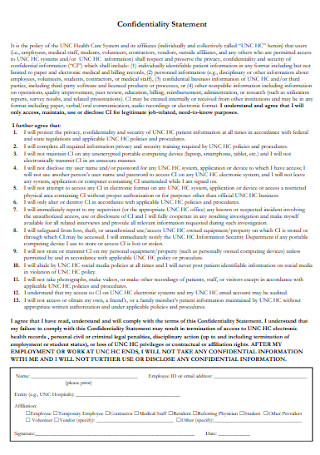
Health Confidentiality Statement
download now -
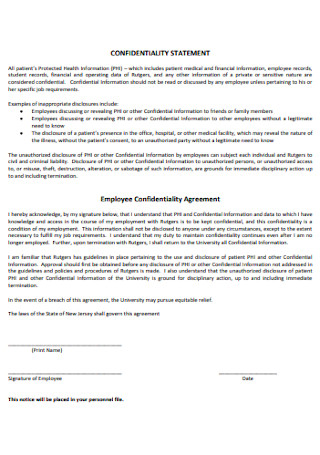
School Confidentiality Statement
download now -
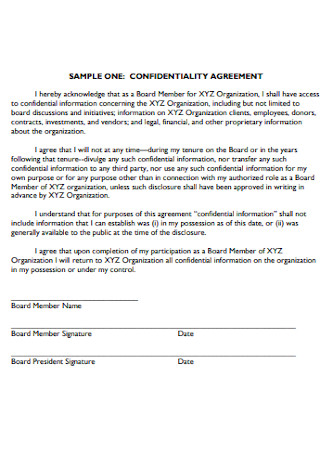
Sample Confidentiality Statement
download now -
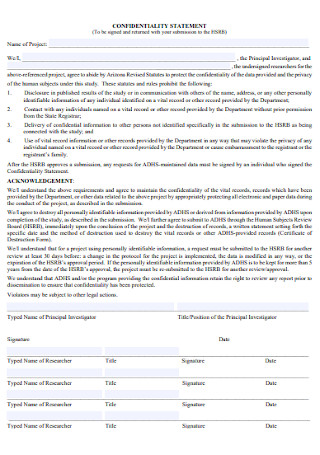
Confidentiality Statement Form
download now -
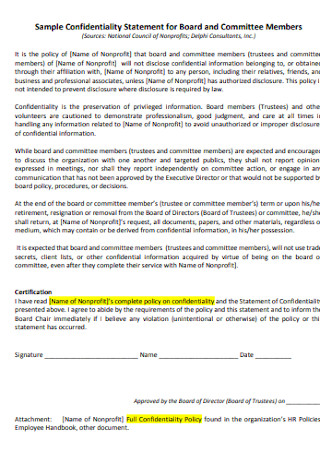
Confidentiality Statement for Board
download now -

Model Confidentiality Statement
download now -
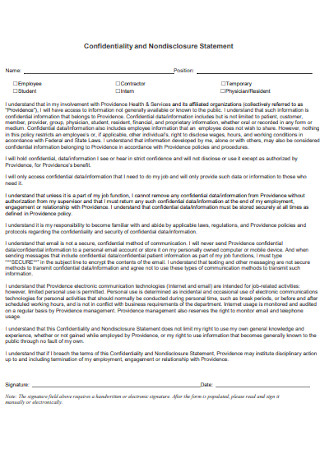
Confidentiality and Nondisclosure Statement
download now -
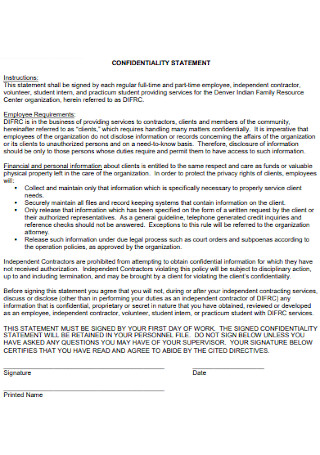
Resource Center Confidentiality Statement
download now -
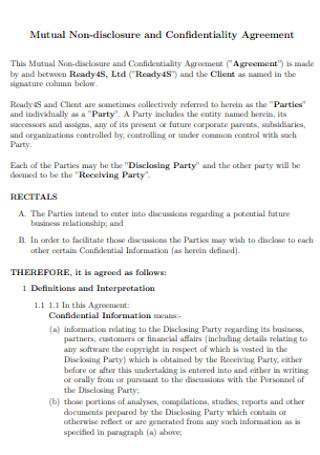
Mutual Non-disclosure and Confidentiality Agreement
download now -
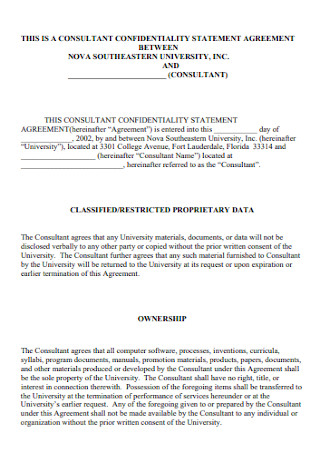
Confidentiality Statement
download now -
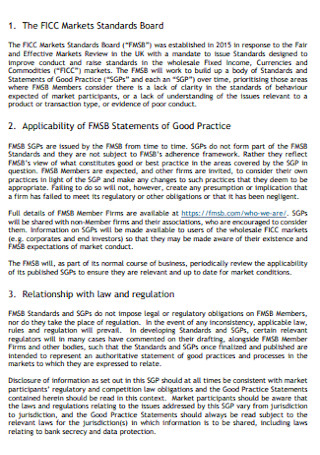
Income Confidentiality Statement
download now -
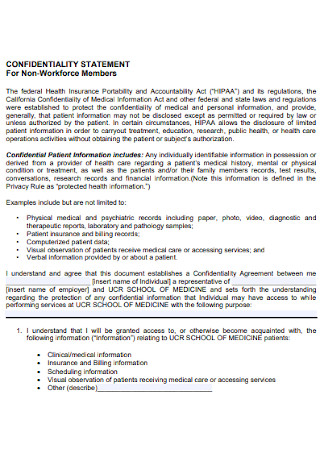
Confidentiality Statement For Non-Workforce Members
download now -
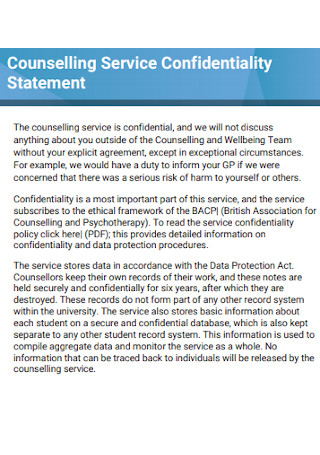
Counselling Service Confidentiality Statement
download now -
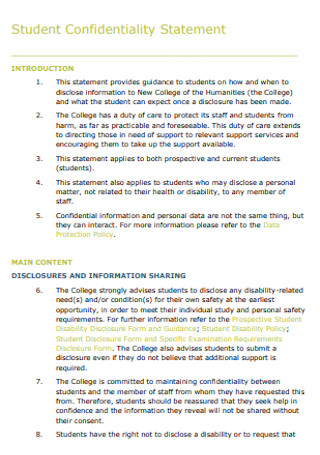
Student Confidentiality Statement
download now -
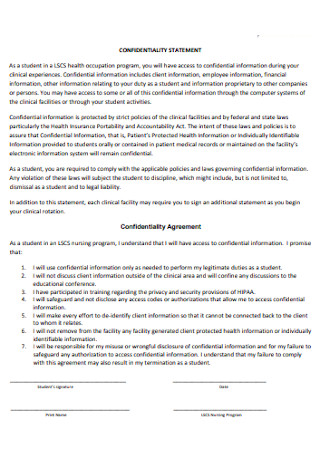
College Confidentiality Statement
download now -
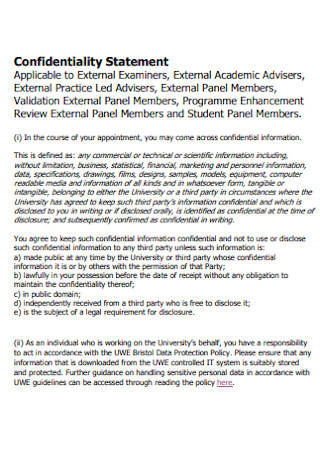
University Confidentiality Statement
download now -
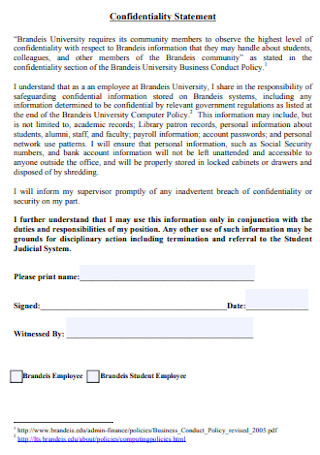
Confidentiality Statement Format
download now -
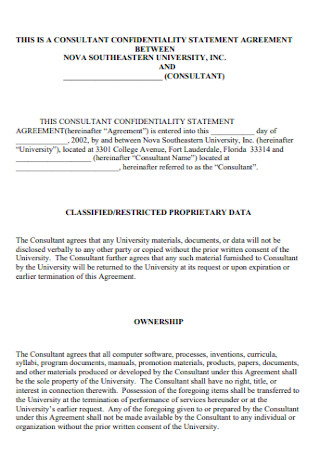
Consultant Confidentiality Statement
download now -

Confidentiality Policy Statement
download now -
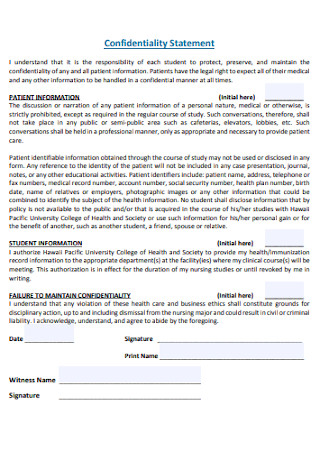
University Confidentiality Statement Example
download now -
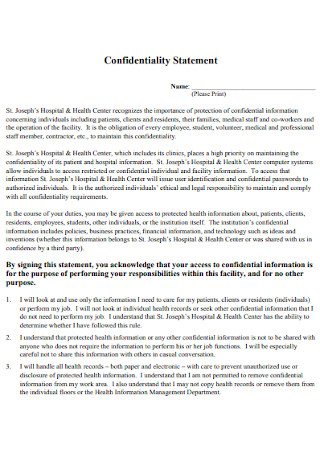
Health Confidentiality Statement Example
download now -
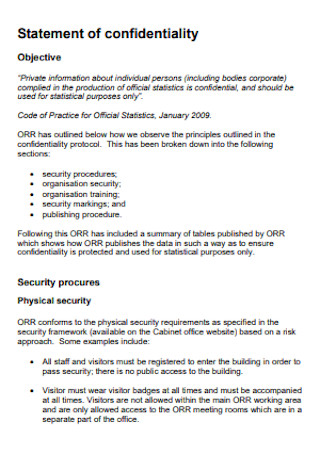
Office Statement of Confidentiality
download now -
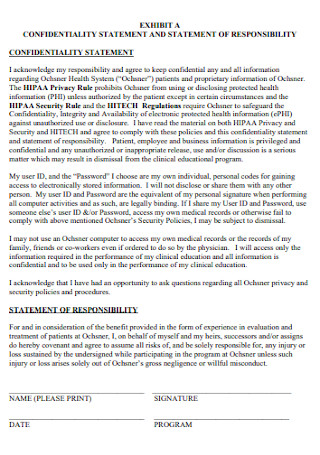
Confidentiality Statement of Responsibilty Template
download now -
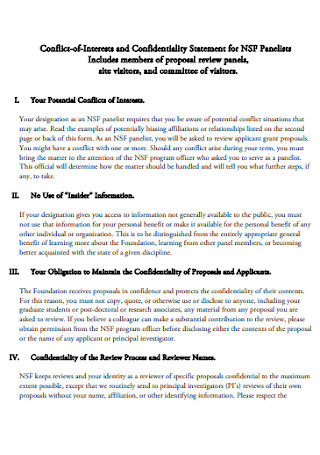
Foundation Confidentiality Statement
download now -
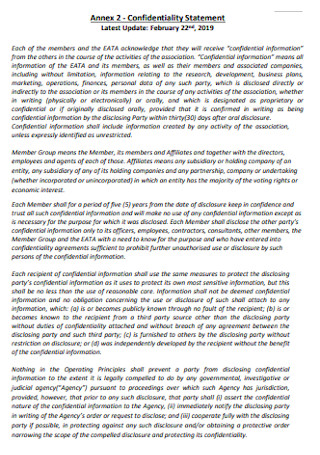
Company Confidentiality Statement
download now -
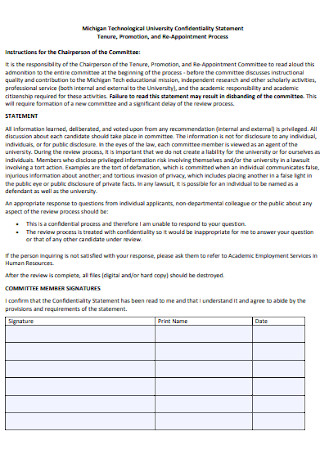
University Confidentiality Statement Template
download now -
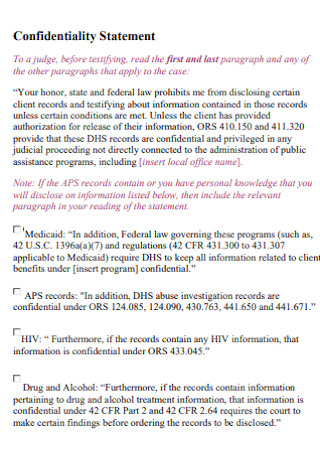
Basic Confidentiality Statement Template
download now -
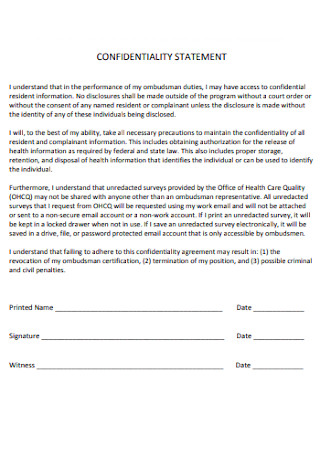
Program Confidentiality Statement
download now -
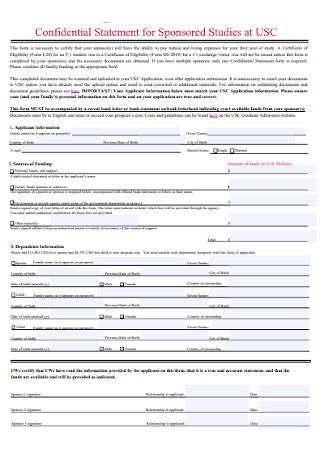
Confidential Statement for Sponsored Studies
download now -

School Volunteer Confidentiality Statement
download now -
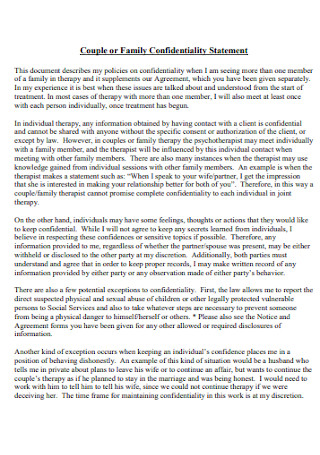
Family Confidentiality Statement
download now -
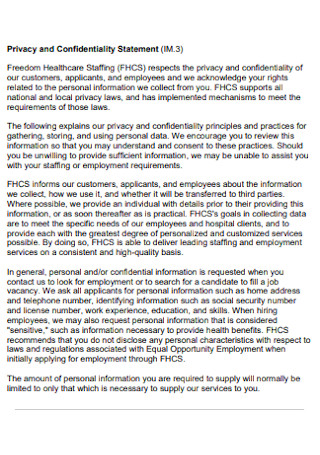
Privacy and Confidentiality Statement
download now -
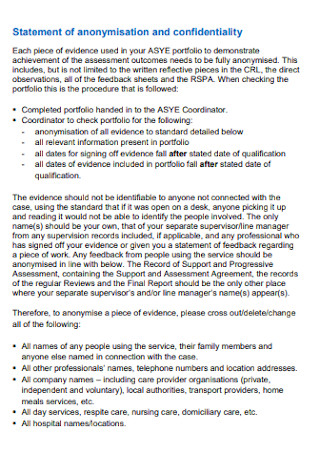
Statement of Anonymization and Confidentiality
download now -
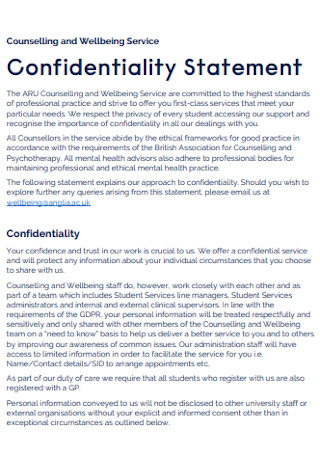
Counselling and Confidentiality Statement
download now -
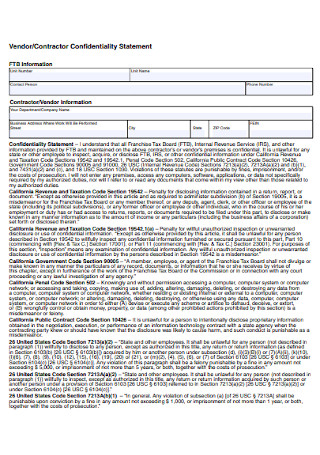
Contractor Confidentiality Statement
download now -
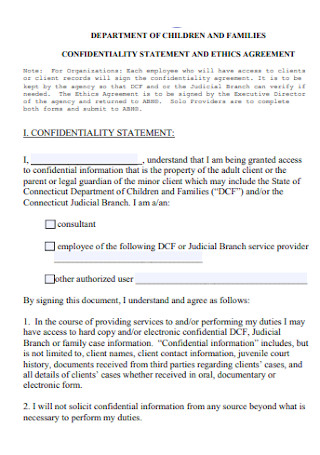
Confidentiality Statement and Ethics Agreement
download now -

Formal Confidentiality Statement Example
download now -
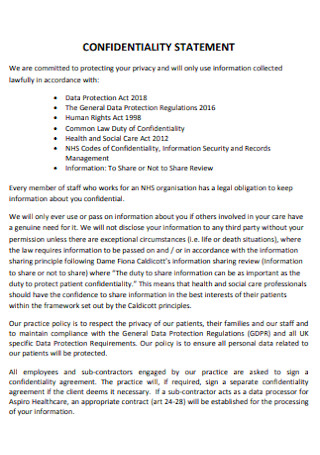
Healthcare Confidentiality Statement
download now -
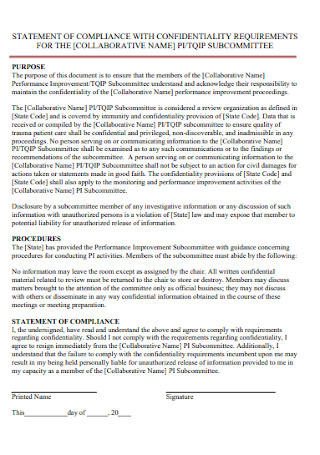
Confidentiality Statement of Compliance Template
download now -
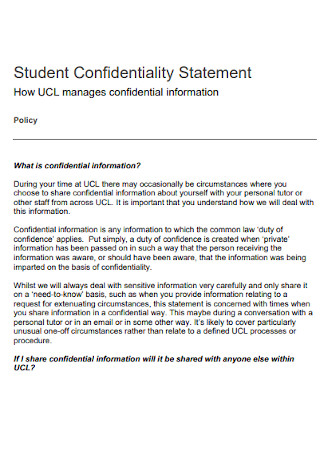
Student Confidentiality Statement Template
download now -
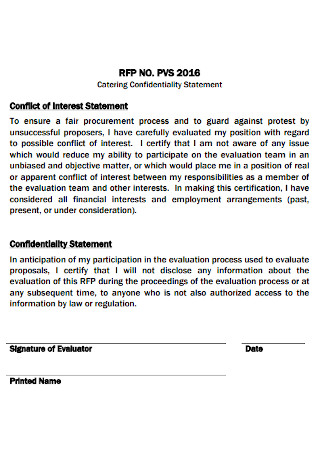
Catering Confidentiality Statement
download now -
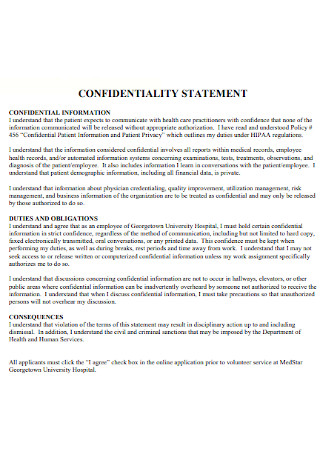
Sample Hospital Confidentiality Statement
download now -
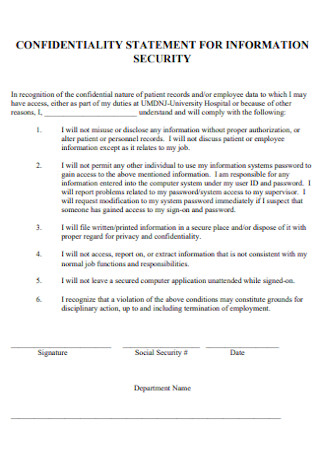
Confidentiality Statement for Information Security
download now -
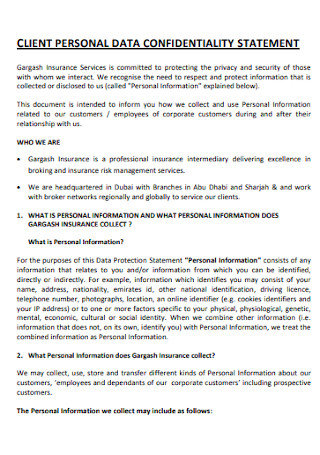
Personal Data Confidentiality Statement
download now -
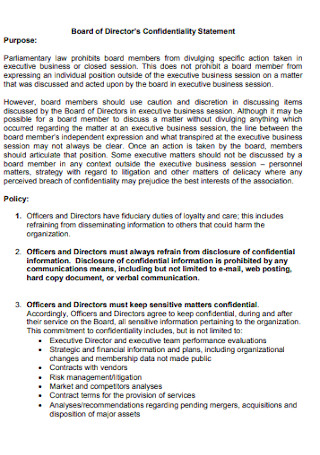
Board of Directors Confidentiality Statement
download now -
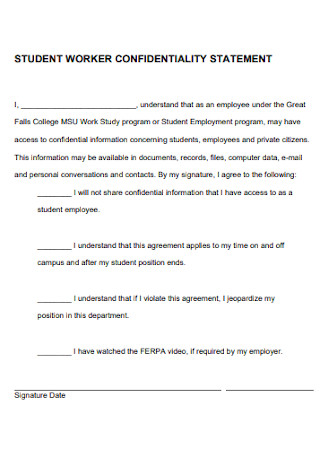
Student Worker Confidentiality Statement
download now -
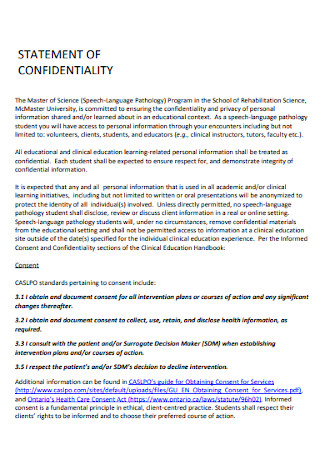
Printable Confidentiality Statement Template
download now
FREE Confidentiality Statement s to Download
47+ Sample Confidentiality Statements
What Is a Confidentiality Statement?
Areas Where Confidentiality Statements May Apply
Ideas and Concepts Behind Confidentiality Statements
Limitations of a Confidentiality Statement
How to Write a Confidentiality Statement
FAQs
What is an example of confidentiality?
How do you write a confidentiality statement in an email?
Are confidentiality agreements legal?
What happens if you sign a non-disclosure agreement?
What Is a Confidentiality Statement?
A confidentiality statement is a contract, agreement, or disclaimer statement that enforces the right not to disclose information between two or more parties. This typically refers and applies to sensitive information.
According to an article published by Forbes, because of the confidentiality clause contained in a non-disclosure agreement, employees are prohibited from speaking ill about a company and discouraged to speak up about negative workplace incidents. The research shows that 60% of US workers have either witnessed or experienced office discrimination. Further, one-third of workers feel restricted with the silence imposed on them due to non-disclosure agreements. One survey involving Google employees reported that 11% of the respondents felt silenced by the non-disclosure agreements they were made to sign.
Areas Where Confidentiality Statements May Apply
Ideas and Concepts Behind Confidentiality Statements
Limitations of a Confidentiality Statement
A confidentiality agreement may be legally binding, but there are exceptional circumstances that may override these agreements, and with due cause too. When it concerns income confidentiality, employers cannot prohibit, much less monitor, employees from talking about and comparing compensation. They may openly discourage it, but if it’s outside the workplace or if it’s within a non-professional capacity, there really is no stopping people from sharing and verifying income information. In the case of unions and especially when employee rights are at stake, wage can be an open topic and it’s difficult to prevent its discussion.
For psychiatrists, psychologists, and their patients, sometimes the professional and most ethical thing to do is pass information or inform the right persons and authorities. This is applicable when confidential information shared by the patient poses a danger or threat to either other people or to the patients themselves. When there are indications of self-harm or potential to inflict damage is present, a therapist cannot just stay silent and keep it to himself or herself.
In the case of banks and financial institutions, employees are prohibited from disclosing confidential client information. However, the issue of ethics can sometimes come up and the person must make a moral decision if integrity and honesty are at stake. An bank employee may have access to various clientele and account records. If there is reasonable ground and proof of fraud within the institution or relating to their clients, a breach of confidentiality may be the only option when it serves the interest of the common good. It’s the reason why whistleblowers risk stability and even their safety, in order to preserve the law, demand accountability, and uphold justice.
How to Write a Confidentiality Statement
A confidentiality statement may come in different forms. It can be a formal contract agreement between different parties, or a brief and generic disclaimer attached to an email. Follow the steps below to ensure your statement contains the necessary elements.
Step 1: Establish the Parties Involved
At the start of every official confidentiality statement, make sure to identify the parties involved in the agreement. Write down each party’s complete name, address, date, and location of the said agreement. The contract may be between employee and employer, patient and healthcare provider, user and service provider, etc.
Step 2: Outline the Agreements
Like any agreement, identify the terms and conditions. You have the option to enumerate and number these terms accordingly. Make sure to define what is confidential. Specify the items that are considered sensitive information and that which cannot be disclosed to an external party. It is imperative that you clarify these well and leave no room for speculation or ambiguity. The obligations of the receiving party should clearly be indicated as well.
Step 3: State the Limitations or Exclusions
Some information can be considered public knowledge. Thus, it is important for the drafting party to determine what terms and conditions fall under confidential or sensitive information. Some agreements grant exceptions by outlining guidelines that may allow the release of confidential information. These conditions typically involve written consent, prior approval, and/or authorized permission. You may also set a time period or specify the duration of which the agreement will be considered valid. For instance, the confidentiality agreement can only be applicable within 24 months from the time of acknowledgment. Or the agreement can state that the contract between an employer and employee can only be valid for 3 years.
Step 4: Affix the Signature
An employee is required to sign at the bottom page of a non-disclosure contract. Both parties who reach a mutual agreement that protects the right of either one, need to affix their signature to validate the understanding. Basically, part of the protocol of any enforceable and formal document requires that all consenting parties sign and affirm their agreement.
FAQs
What is an example of confidentiality?
Confidentiality entails certain personal and private information that a person may not necessarily want the world to know. Many people prefer some of their information to remain private and limit other people’s access to it. Confidential information has to be protected for the sake of safety and security. An obvious example of confidential data is credit card information. With the absence of confidentiality, people will be more susceptible to fraud and other financial problems.
How do you write a confidentiality statement in an email?
Emails are exchanges between two or more people. People can send and receive information either internally within their group or organization; or externally to outside parties. Some of the information that’s exchanged are sensitive; and both professional and personal discretion must always be practiced. An email disclaimer would remind the recipient of the email that the contents of the message must not be disclosed anywhere else. And that it is intended only for the recipient or recipients of the email.
Are confidentiality agreements legal?
Yes, confidentiality agreements are considered legal and binding documents. It establishes an agreement between two or more parties; and outlines terms and conditions that pertain to the protection and non-disclosure of confidential information. These legal agreements normally come with a duration clause and are enforceable for a fixed amount of time.
What happens if you sign a non-disclosure agreement?
If you are asked to sign a non-disclosure contract, you are effectively promising that you will not share any insider secrets or confidential information of the other party. You may not divulge to any external party regarding technical and business information of the company. These may include financial data, customer lists, passwords, designs, source of supply, and any other systems or plans.
If you look at it from an unconventional perspective, transparency is one key element in the practice of confidentiality. In an odd way, both parties are required to be forthright and transparent not only about what information is to be kept secret, but also about their responsibilities toward each other. Confidentiality agreements are necessary in a sense that it serves as both a reminder and an assurance, for one or either party. Create your own confidentiality statement by downloading a sample template now!
